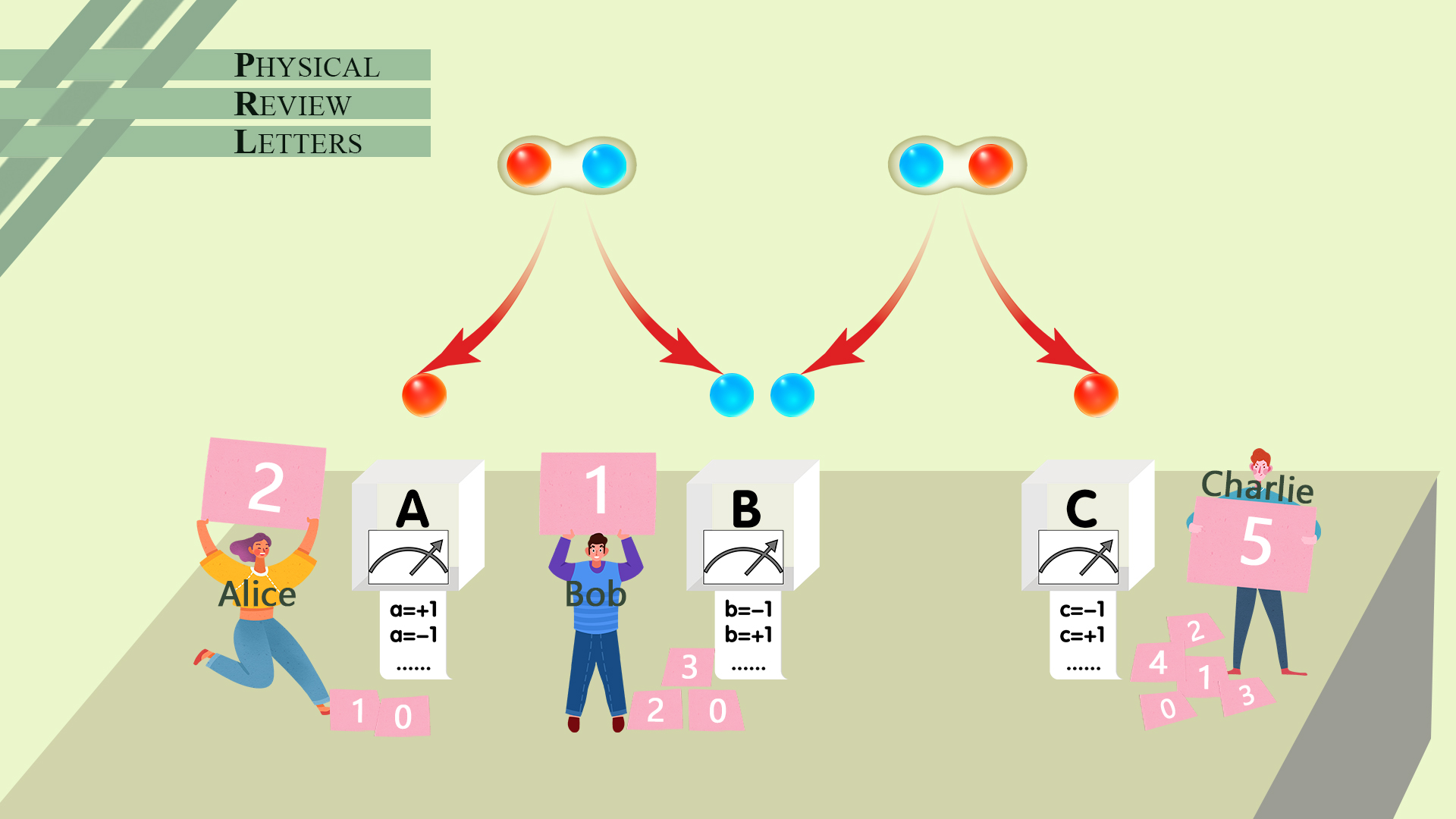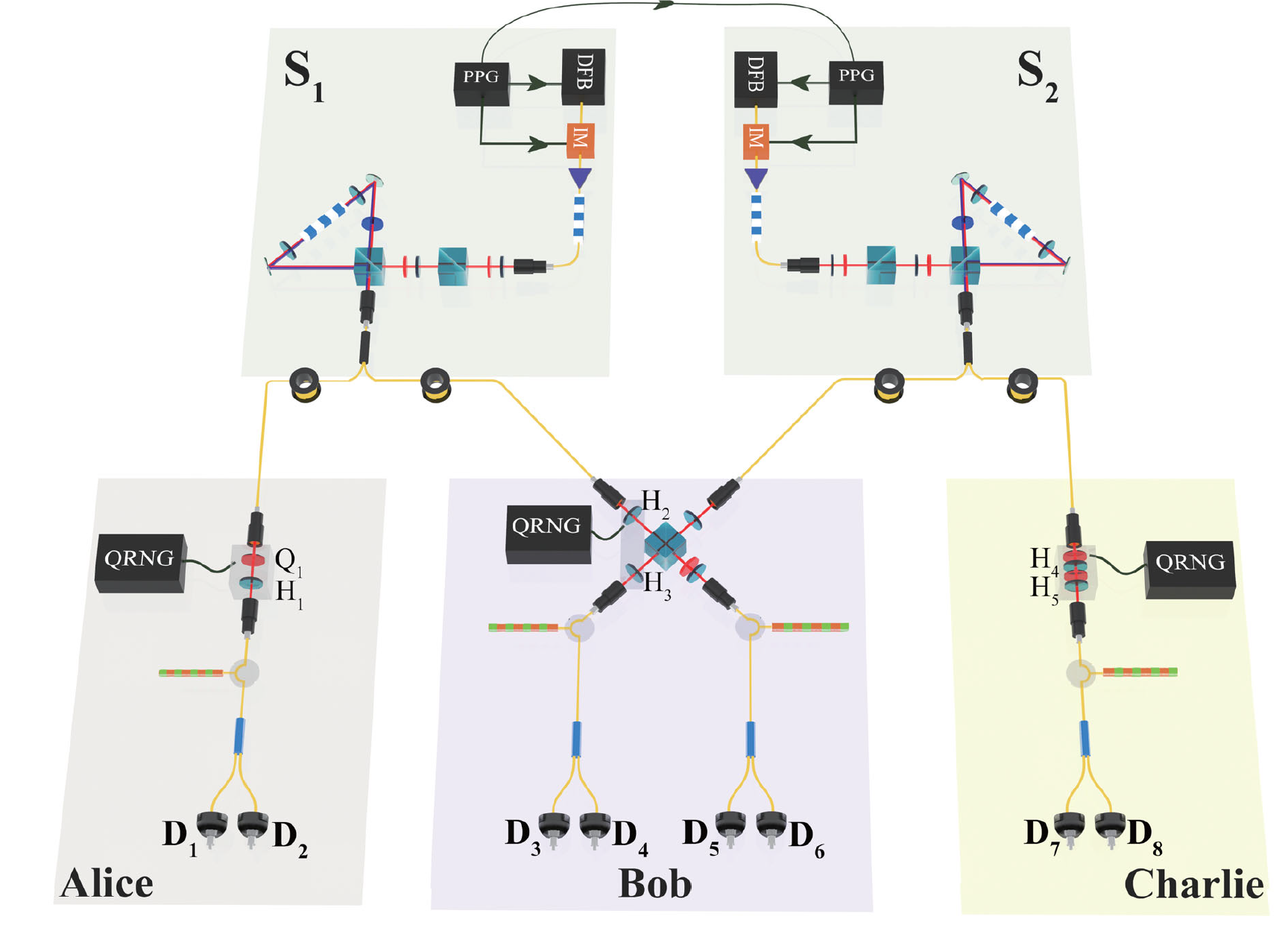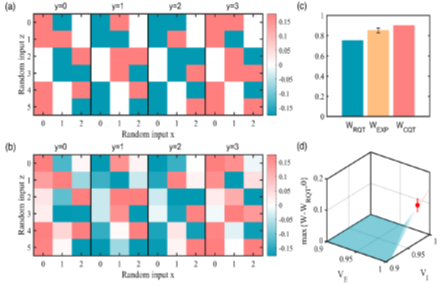A number is one of the most basic concepts abstracted from nature by human beings. Natural numbers, zero, negative numbers, rational numbers, real numbers, complex numbers, every expansion of the concept of a number is accompanied by human beings’ deeper understanding of nature and scientific progress. Complex numbers were initially invented to make all polynomials have solutions, and using them as the mathematical foundation of quantum mechanics is more a coincidence than a deliberate arrangement.
Recently, Professor Jingyun Fan’s research group from the Southern University of Science and Technology (SUSTech), in collaboration with scholars from Austria, Spain, Switzerland, and the University of Electronic Science and Technology of China (UESTC), have made important progress in the study of the fundamental position of complex numbers, one of the fundamental problems of Quantum mechanics.
The related paper, entitled “Testing Real Quantum Theory in an Optical Quantum Network,” was published in Physical Review Letters, one of the most prestigious journals in physics.

In the early days of quantum mechanics, some of its founders, such as Schrodinger, doubted the fundamental role of complex numbers in quantum mechanics. Although the predictions of complex quantum mechanics are subject to rigorous experimental tests, there is no reason to rule out a theory of real quantum mechanics based on real numbers that could perfectly explain the results of these experiments. While Schrodinger was thinking about the fundamental position of complex numbers, Einstein and two collaborators drew wider attention to another fundamental problem of quantum mechanics. They pointed out quantum physics is incompatible with the local hidden variable theory.
After 80 years of effort, several research groups from Austria, the United States, the Netherlands, Germany, and China independently realized the theoretical scheme proposed by the British physicist John Bell and ultimately solved this problem. Quantum theory is not a local realism, fundamentally different from classical physics. Attempts by scientists to use Bell’s original theoretical method to study the place of complex numbers in quantum theory ran into difficulties. In 2020, a group of Austrian, Spanish, and Swiss physicists found that by putting Bell’s theoretical approach into the context of a quantum network, it’s possible to answer the question of whether real quantum mechanics can replace complex quantum mechanics.
Working closely with researchers from SUSTech and UESTC, they designed an experimental scheme in a photonic quantum system, which has been successfully implemented at SUSTech. The experimental results can not be explained by real quantum mechanics, which clarifies the fundamental position of complex numbers in quantum mechanics. At the same time, an experimental study on the initial scheme proposed by theoretical researchers using the superconducting quantum system by researchers in the University of Science and Technology of China (USTC) was also published, which is consistent with the conclusion of SUSTech. Therefore, these two experiments based on different quantum physical platforms independently proved the necessity of complex representation for quantum theory.

Figure 1. Schematic of the experiment

Figure 2. Experimental results
Zhengda Li, Assistant Researcher of the Shenzhen Institute of Quantum Science and Engineering (SIQSE) at SUSTech, and Yali Mao, Research Assistant Professor of the Department of Physics at SUSTech, are the co-first authors of this paper. Prof. Jingyun Fan of the Department of Physics and SIQSE at SUSTech is the corresponding author.
Collaborators include Professor Miguel Navascues from the Austrian Academy of Sciences, Professor Antonio Acin from the Barcelona Institute of Science and Technology, Professor Nicolas Gisin from the University of Geneva, and Professor Zizhu Wang from UESTC. SUSTech is the sole communication unit. Their results have been reported in Nature, the American Physical Society, and the American Science News.
This study was supported by the Guangdong Pearl River Leading Talents Program, Shenzhen Pengcheng scholar, the Key-Area Research and Development Program of Guangdong Province, Guangdong Pearl River Innovation and Entrepreneurship team, the Guangdong Province Key Laboratory of Quantum Science and Engineering, Shenzhen Science and Technology Innovation Commission, SIQSE, and the High-Level Optics Platform of the Department of Physics at SUSTech.
The researchers of SUSTech further expand their study on quantum multipartite nonlocality. Through further development of the quantum inflation technique, they revealed the unique properties of multipartite nonlocality in the quantum network, proposed a scheme to recycle quantum nonlocality, and realized the preliminary experimental demonstration. Their results were published as a preprint on the academic website arXiv. This series of work enriches the cognition of quantum fundamental physics and provides a new tool for quantum information processing.
Paper link: https://journals.aps.org/prl/abstract/10.1103/PhysRevLett.128.040402
To read all stories about SUSTech science, subscribe to the monthly SUSTech Newsletter.
Proofread ByAdrian Cremin, Yingying XIA
Photo By